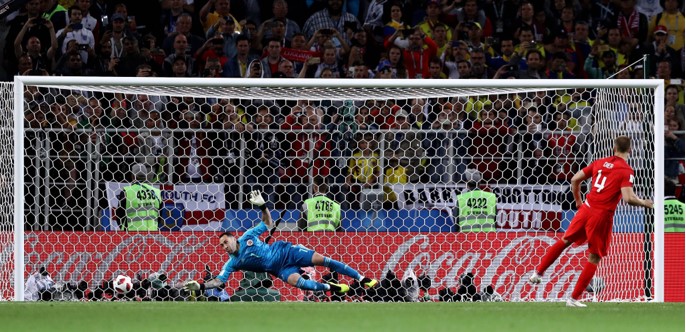Over the years, we’ve been taught that stress is unhealthy. Google the word and you’ll see lots of articles on its dangers, how to avoid it, and tips for coping. But what if that was only half the story? What if this enemy to our wellbeing can actually become a friend?
I’ve been learning more about stress recently, and wanted to share some things I’ve picked up. Among them are new ways of thinking about stress, and some surprising health benefits. It turns out that bits of controlled short-term anxiety are good for you.
What do we mean by ‘stress’?
When we bend a twig, it snaps when we apply enough force, or stress. From the 1940s, a researcher named Hans Selye took this term from physics, and applied it to the human body. At medical school he’d spotted that patients with different illnesses showed some common symptoms. These were caused by an imbalance in the problems they faced and the resources they had to deal with it. This is what we now call stress.
The two types of stress
Dr Selye was a pioneer, and the first person to describe how our bodies behave in challenging situations. He also showed us that our ‘stress response’ is the same – whether its cause is negative or positive. It’s useful to make a distinction between these two types:
- ‘Distress’ is the unpleasant stress we try to avoid. It can be generated by life events such as losing a job, a relationship break-up or grief. It will often cause severe anxiety and get in the way of us functioning normally.
- Positive stress, or ‘eustress’, can be a real motivator. It’s mostly short-lived, but boosts our mood and productivity. Our pulse quickens, but this time there is no real threat or fear. We feel this stress when we ride a rollercoaster, start a new job, or go on a first date.
The key is working out which of these stresses apply in our daily lives. Then we can take the ‘eustress’ and tame it to our advantage. As sport psychologist Charlie Unwin puts it, we can invite stress on our own terms. Being good with stress is better for us than trying to keep it away.
Treating stress as a skill
What does this mean in practice? We have to believe that we can get good at ‘eustress’. To do that, we’ve got to practise it like any other skill.
Charlie Unwin recommends using a ‘stress ladder’. Firstly, think about a challenge you have where stress will be an obstacle. For English footballers, that might mean going to a major tournament and taking a penalty in a shootout. For you, it could be physical stress, like achieving a personal best in a running event. Or it might be a mental challenge like making a speech or a Zoom presentation.
Now write down all the things that might cause you stress. Planning a presentation, perhaps you’re worried about your posture or body language. You might be anxious about looking nervous, what to do with your hands, or your laptop going wrong.
When you’ve got this list, you isolate one stressor at a time. Do this by adding each one to an imaginary ladder. Those easiest to deal with sit on the bottom rungs, with the toughest at the top. Now we invite in some stress by dealing with each stressor one by one, climbing from the lowest point.
For a presentation, this might involve filming yourself on a smartphone to get your gestures and timing right. You could rehearse in front of your partner to fix any bad habits. You could look out for tips and advice on YouTube. If your challenge is a physical one, are you following a plan to introduce the stressors you need to adapt and improve? Our minds respond well to these bite-sized, daily chunks of controlled stress.
Let’s take a personal example. Right now I’m following an 8-week training plan to run 10k in under 40 minutes. The stressors I invite in will develop my physiological fitness so I can run faster for longer. This concept is also known as speed endurance. One of the central pillars is ‘interval training’, running hard then resting. The interval refers to the recovery period, which we can reduce over time. Each session, each week has a specific aim and the cumulative effect will deliver my goal.
Some experts call this process ‘hardening’ but I prefer ‘stress inoculation’, a phrase from the military. This reminds us that having a skill is not the same as being able to deliver it consistently under challenging conditions. To do that, you’ve got to get really comfortable with stress. That’s why the army trains recruits when their hands are frozen, their kit’s wet through and they’ve hardly slept. They use the stressor of repetitive drills to hardwire the right pattern into reflexes.
What’s the real health hazard?
Another thing I’ve learned is that it’s not stress alone that harms our health, but our attitude towards it. In the video I’ve linked to below, Charlie Unwin talks about a large-scale survey in the US. Over many years, those people who thought that stress was good for them had better health outcomes than those who did not. So our relationship with stress is very important, as are our beliefs about it.
When you give it a little thought, a life without stress wouldn’t be any better. Many things that make us proud and bring purpose to our lives are hard. If we could wish away the stress, we’d say goodbye to a lot of the meaning and feelings of accomplishment that keep us going.
Stress is so often seen as a negative sensation. Work can pile up, family commitments wear us out, and it’s sometimes hard to relax. But it’s worth taking the time to re-frame that view. As the father of stress Dr Hans Selye taught us, we…
“…should not try to avoid stress any more than we would shun food, love or exercise.”
Learn more


